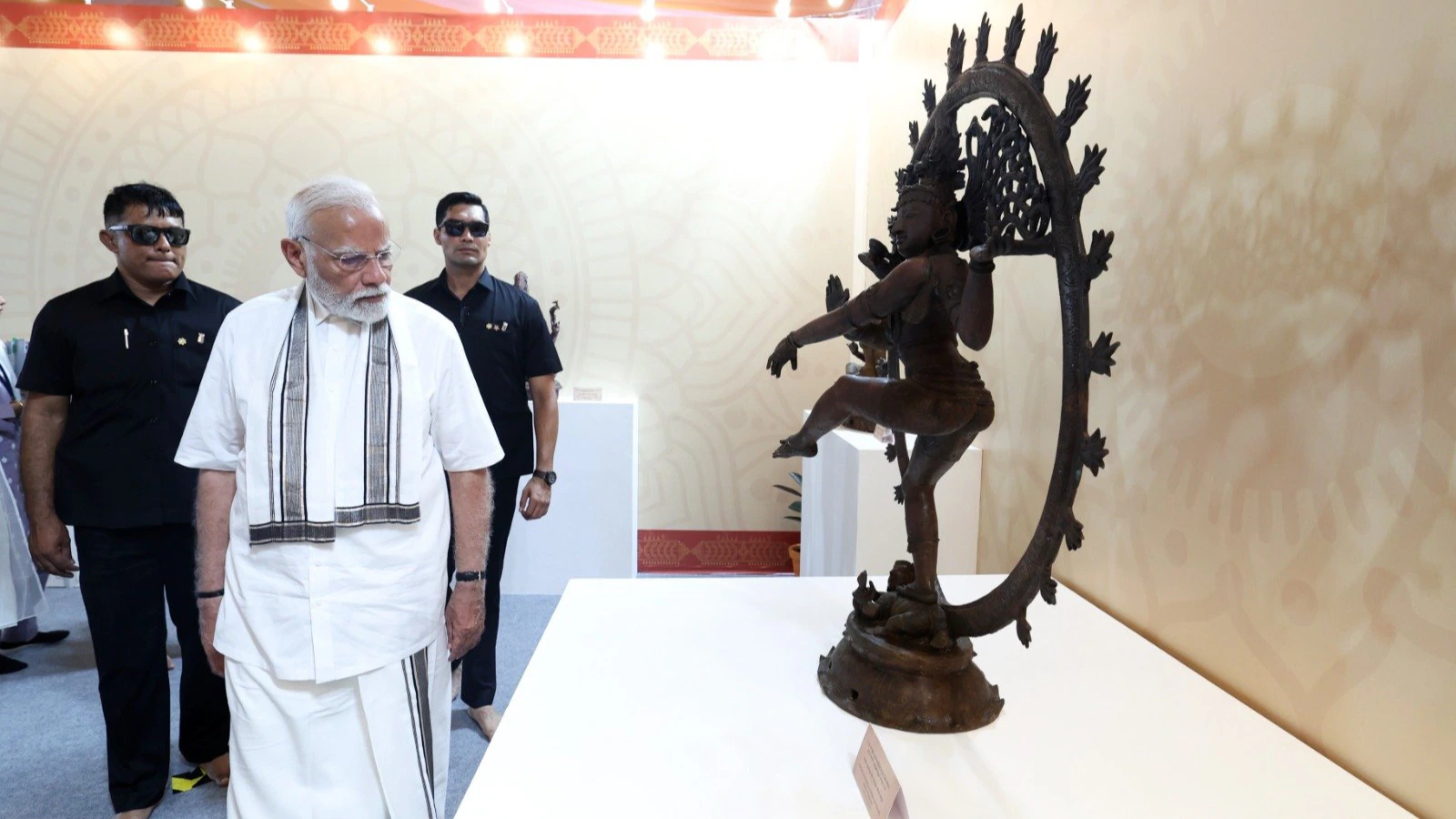
Long before Magna Carta, Cholas had ‘ballot pots’: What is the ancient voting system PM Modi lauded?
How did your country report this? Share your view in the comments.
Diverging Reports Breakdown
Long before Magna Carta, Cholas had ‘ballot pots’: What is the ancient voting system PM Modi lauded?
Prime Minister Narendra Modi said the Chola empire carried forward India’s ancient democratic traditions. The inscriptions of Uttaramerur, a village in present-day Kanchipuram district, offer some of the world’s earliest surviving evidence of a formal electoral system. Candidates had to own tax-paying land, be between 35 and 70 years old, possess knowledge of Vedic texts or administration, and have no record of crime or domestic abuse. Debt defaulters, alcoholics, and close relatives of sitting members were disqualified. Annual audits were mandatory. Misappropriation of funds or dereliction of duty could lead to disqualification from future office, a radical mechanism even by modern standards. The Chola administrative framework was built on two foundational units: the Sabha for Brahmin settlements and the Ur for non-Brahmin villages. These were not symbolic councils but elected bodies with real powers over revenue, irrigation, temple management, and even justice.
Long before the Enlightenment in Europe birthed the ideals of representative governance, the Cholas had etched out rules for local self-rule, literally inscribed into stone. The inscriptions of Uttaramerur, a village in present-day Kanchipuram district, offer some of the world’s earliest surviving evidence of a formal electoral system.
As chronicled by K A Nilakanta Sastri in The Cholas (1935), the Chola administrative framework was built on two foundational units: the Sabha for Brahmin settlements and the Ur for non-Brahmin villages. These were not symbolic councils but elected bodies with real powers over revenue, irrigation, temple management, and even justice. “It was democracy at the grassroots — built into the fabric of Tamil civic life,” Sastri wrote in Chapter VIII, “Local Self-Government”.
Story continues below this ad
But what made the system particularly striking was the method of voting, a process called the Kudavolai system or “ballot pot” election. Under this method, as detailed in the Uttaramerur Inscriptions documented in Epigraphia Indica Vol. XXII (1933–34), the names of eligible candidates were inscribed on palm leaves and placed inside a pot. A young boy, typically chosen for his impartiality, would draw the lot in full public view. This randomised draw was not a game of chance but a civic ritual rooted in transparency, fairness, and collective consent.
While many historians say it as one designed to combine divine will and civic integrity, essentially to ensure that power was not monopolised by dynastic elites, eligibility criteria under the system were strict. Candidates had to own tax-paying land, be between 35 and 70 years old, possess knowledge of Vedic texts or administration, and have no record of crime or domestic abuse. Debt defaulters, alcoholics, and close relatives of sitting members were disqualified. “The disqualifications were perhaps even more revealing than the qualifications, laying out a moral vision of public service,” Sastri wrote.
Story continues below this ad
Accountability was embedded. Annual audits were mandatory. Misappropriation of funds or dereliction of duty could lead to disqualification from future office, a radical mechanism even by modern standards. Inscription no. 24 from Epigraphia Indica details the dismissal of a treasury officer over embezzlement, followed by a fine.
These weren’t isolated experiments. As Anirudh Kanisetti notes in Lords of the Earth and Sea (Penguin, 2023), the Chola model of statecraft relied heavily on decentralised administrative systems. By empowering merchant guilds such as the Manigramam and Ayyavole, and sustaining local assemblies, the Cholas expanded both trade and legitimacy. “Imperial rule,” Kanisetti wrote, “was constructed not just through conquest, but by engineering sustainable civic systems”.
This is the vision Modi looked to tap into when he said, “We hear about kings who brought gold, silver, and livestock after conquests. But Rajendra Chola brought Gangajal”, a reference to the emperor’s symbolic act of bringing Ganga water to his new capital, Gangaikonda Cholapuram, in 1025 CE. The act, memorialised in copper plates (as cited in Sastri’s The Cholas), was described as building a “liquid pillar of victory (ganga-jalamayam jayastambham)”, merging military triumph with ritual statecraft.
However, the Chola system was far from egalitarian in the modern sense. It excluded women, labourers, and landless groups. But as historian Tansen Sen wrote in The Military Campaigns of Rajendra Chola, the Cholas were masters of strategic signalling, not just through naval conquests but in governance structures that prefigured electoral thought.
